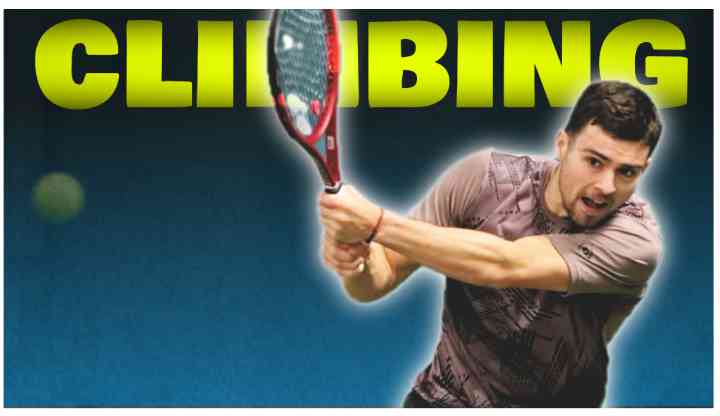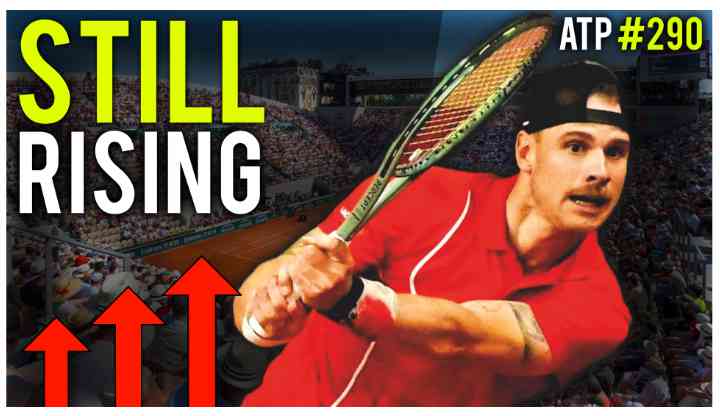In a rematch of the 2014 Wimbledon final we thought there might be a different conclusion after Roger Federer made quick work of Andy Murray in his half of the draw. Despite that result, Novak Djokovic had different plans, especially after his loss to Stan Wawrinka in the French Open final. Wawrinka did something that could prove difficult for Federer, beat Djokovic from the baseline.
Outwit, Outplay & Outlast…
Grass should favor the aggressor and there’s no doubt this surface gives Roger his best chance to beat Novak in a Grand Slam. Even on a quicker surface Roger had his hands full when trying to play aggressive tennis against Djokovic. As we see in the graphic below, Djokovic beat Federer in three out of the four rally categories. The category where Federer came out on top was 5-9 shots. In that segment, Federer was able to play aggressively and force errors from Djokovic or close points out at the net.
The Serve +1 Battle
In the French Open final Wawrinka hit almost 2 forehands for every backhand he hit on his serve +1. That strategy worked well for Stan and Roger had a similar gameplan in this match. Where things may have gotten a little off track for Roger was his insistance on hitting a serve +1 forehand even when his position in the court wasn’t ideal. As we see in the chart below, Roger put up a three to one ratio of forehands to backhands on his serve +1.
Novak is comfortable on both sides and it shows in the data. He hit an equal amount of forehand and backhand groundstrokes on his serve +1. Clearly, Federer felt that when he wasn’t serve and volleying that he needed to avoid hitting backhands so he could apply pressure with his forehand. The problem he faced, besides the challenge of compromised court position was the quality of the Djokovic return of serve.
I might as well hit it right at you…
One of the most interesting stats from this match was the return of serve data. Specifically the placement of the return of serve. As I’ve talked about in past articles, (Click HERE) “Damage” is a category I like to use to analyze aggressive play and court position. Damage is when you hurt your opponent with a shot through power or placement. In this case, and especially on the return of serve, damage placement played a critical role in the Djokovic return game. Djokovic had just five return of serve winners in this match. When he wasn’t hitting the ball away from Roger on the return, he hit it right at him. We can see from the chart below the value of hitting deep returns up the middle of the court against your opponent. Djokovic did the most return damage hitting through the middle.
What we see in the chart above is that both players actually hurt their opponents the most when hitting their returns deep up the middle. Djokovic put a total of 95 returns in play through the match, 45 of those (47%) were hit up the middle of the court.
No I won’t back down…
Federer had completely different court position than Djokovic on defense, his positioning and results were challenged when he needed to defend. In our French Open final article I covered the four Zones of the court (Click for Zones). Zone 4 is from halfway back from the baseline to the back fence. Zone 3 is about halfway back from the back fence to the baseline. Zone 2 is from the baseline to the service line and Zone 1 is from the service line to the net.
When Djokovic did damage to Federer with his Serve +1 Roger spent the majority of his time defending that ball from Zone 3 (70%). Federer visited Zone 4 (28%) of the time when he faced damage from the Djokovic Serve +1. By not giving himself more time Roger was frequently jammed in his positon and that allowed Novak to play more aggressively on the next ball. We see in the chart below that when Djokovic took damage from Federer’s Serve +1 he dropped back to receive the ball in Zone 4 (57%) of the time. That number would likely have been significantly higher if Federer wasn’t serve and volleying so frequently.
This is a very difficult match-up for Federer. Roger’s game style works against almost every other player on tour, but his court positioning hasn’t been successful against Djokovic in a Grand Slam for quite some time. He’s either going to have to alter his court position slightly to cut down on errors or get better at taking the ball early to rob Djokovic of time.
Winners by Zone
The last stat I’ll go over is winners by Zone. This category went as you would expect, Federer hit the vast majority of his winners in Zones 1 and 2 while Djokovic was more evenly dispersed amongst Zones 1 through 3.
Conclusion and Key Stats
- Djokovic hurt Federer consistently by hitting his serve returns deep with the majority in the middle third of the court.
- Djokovic won three out of the four rally length categories with Federer victorious in the 5-9 category.
- Federer hit a first ball forehand 59% of the time, three times as often as his backhand.
- Djokovic fell back into Zone four consistently when hurt by Federer’s Serve +1, while Federer stayed closer to the baseline when playing defense.
- Federer collected most of his winners in Zones 1 and 2, with most of those coming by attacking the net.












